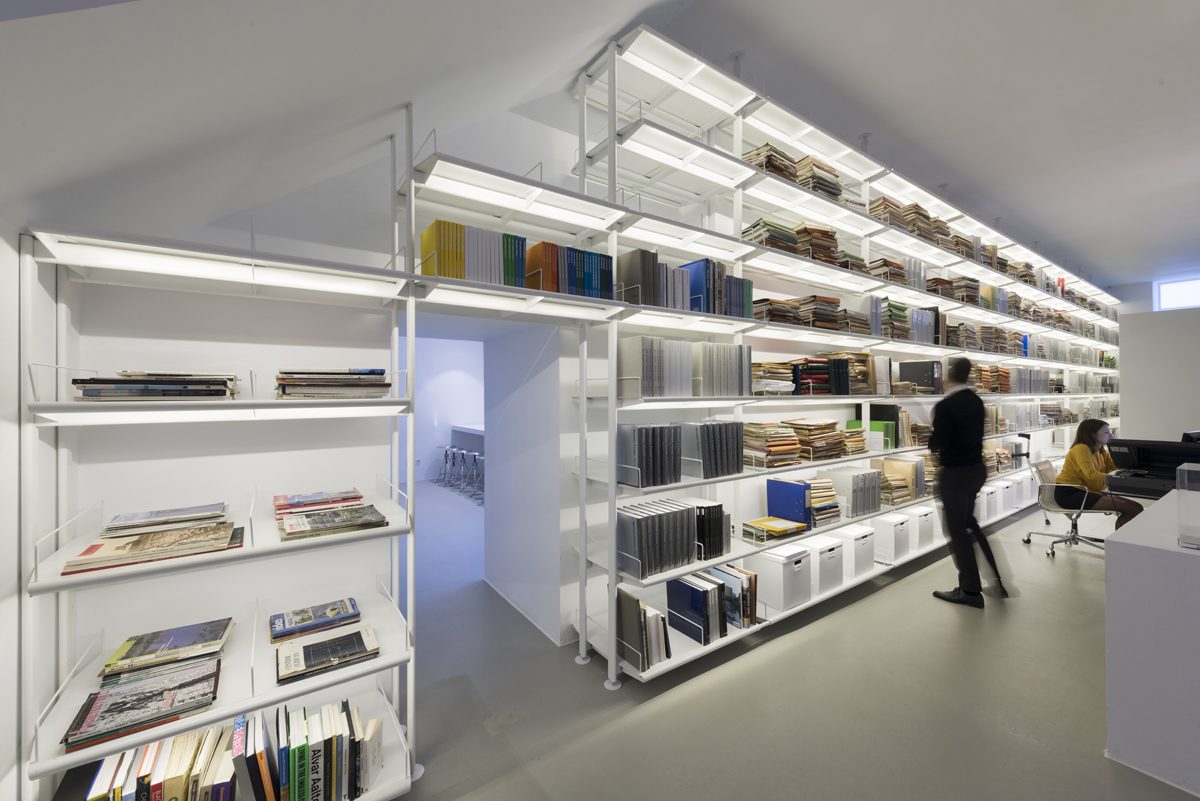Peter Murray visits the Norman Foster Foundation in Madrid, where the architect’s work will be used to shape discussion about the issues of tomorrow

The launch of the Norman Foster Foundation’s Madrid headquarters on 1 June was a star-studded affair, starting with a conference in the Teatro Real opera house and ending with dinner in the Prado Museum.
Foster himself, Michael Bloomberg, mayor of Madrid Manuela Carmena, Apple designer Jony Ive, Chile’s Alejandro Aravena, and CNN’s Christiane Amanpour headed the bill of speakers commenting on the proposition ‘The Future is Now’, and on how design and disruptive technology are dealing with the crisis of exponentially expanding cities. Ive described his work as making “tools for people”; Henk Ovink, the Netherlands’ Special Envoy for International Water Affairs, discussed the critical field of water management; Matthias Kohler, Professor of Digital Fabrication at ETH Zurich, showed videos of robots and drones erecting complex structures; and artists Olafur Eliasson and Cornelia Parker spoke about art and technology and the potential of graphene.
There were warnings too: Foster criticised the West’s lack of planning, and Aravena was concerned by the ownership of public space, the “void in the city”. Bloomberg highlighted the destruction of jobs through technological advance, a fear reinforced by historian Niall Ferguson who described Silicon Valley as “terrifyingly historically ignorant” and warned of a massive backlash.
Foster concluded the event with two stories illustrating his own interpretations of history and the advance of technology. He told of the Great Stink of 1858 and how the putrid Thames forced the authorities to invest in Bazalgette’s revolutionary sewers, and recounted how New York had been unable to deal with a rising tide of horse manure until along came Messrs Daimler and Ford, and the problem was solved in a couple of decades. The car was the saviour of the city. A century later, it has become the enemy of civilised urban spaces, but technology will again respond. “I have great confidence and hope in the future”, he said.
There then followed a reception in the NFF building set in the leafy embassy quarter of the city. The listed mansion was designed by Joaquín de Saldaña in 1912 for the Duke of Plasencia. In the 1930s it was the Turkish embassy, and more recently the headquarters of a bank. Foster bought it for a snip during the depths of the recession and has restored it to its former glory.
The rooms are filled with a treasure trove of Normanalia – early drawings, models, sketches, huge renderings, personal artefacts, bicycle designs and cross-country skis. The four floors include models and drawings of the Sainsbury Centre at UEA, Stansted airport, the Millennium Bridge, 30 St Mary Axe, the Hearst Tower. Everything is presented in museum-quality perfection. On the day, each room was overseen by a uniformed assistant who not only asked you politely to refrain from taking photos but also, impressively, could provide a bilingual description of the works.
On the lower floors is the archive, which is responsible for the “conservation and dissemination of the architectural records of Norman Foster”. These include no fewer than 10,694 images and 13,284 slides and photographs, and 130,514 drawings and sketchbooks, including Foster’s student work. (According to one of the foundation trustees, “Norman never threw anything away”). The foundation also acts as a research centre and is carrying out work on drone ports for African communities, designs for which were first displayed at the Venice Biennale last year.
Access to the foundation is by appointment only but Foster is particularly keen to attract younger architects to understand his approach and enthusiasms. The conference gave some indication of their interest, as the Teatro Real was besieged by students, who were disappointed to be unable to get into the overbooked 1700-seat auditorium.
Will we now see a spate of such starchitect collections? Herzog & de Meuron has recently built a permanent home for its own archive in Basel, and in March it was announced that the Getty Research Institute is to receive thousands of drawings and models by Frank Gehry. The trustees of the Zaha Hadid Foundation must surely be planning a permanent celebration of her work, and Rem Koolhaas’ archive is already much too big for the usual resting places for architects’ archives.
Corbusier wrote his will in 1960, five years before he died, leaving his work to the Fondation Le Corbusier which would ensure the “continuation of the endeavour pursued throughout a lifetime”. The Norman Foster Foundation – now totally separate from the eponymous commercial practice – will ensure that Norman’s endeavours remain a topic of debate well into the future, and a beacon of optimism for the benefits of technological advance.


























